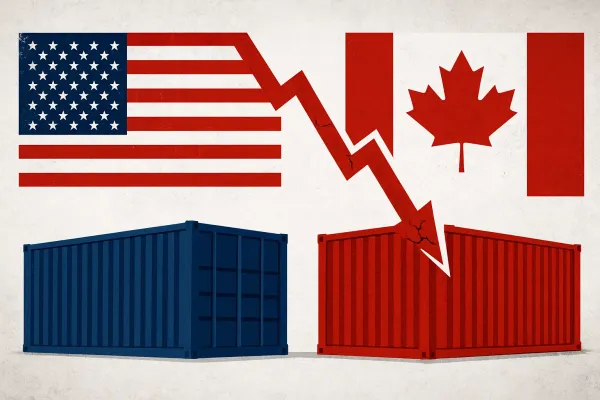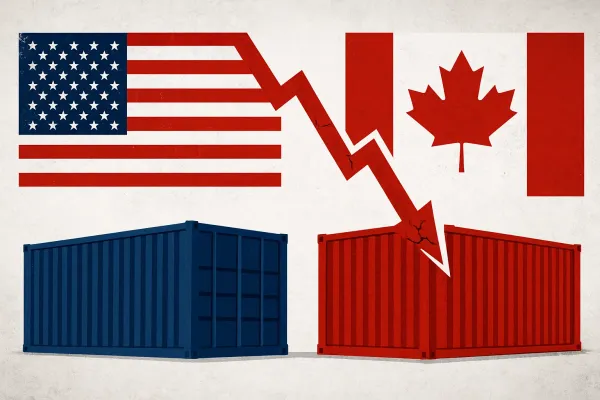From Allies to Adversaries: How the Taliban–Pakistan Relationship Broke Down and What It Means for South Asia
Pakistan’s decades-long gamble of nurturing militants for influence in Afghanistan has collapsed. The Taliban’s rise has turned into Islamabad’s nightmare, with cross-border attacks, diplomatic strain, and growing regional isolation.

An Analytical Examination of Pakistan's Failed Strategic Gamble and Its Implications for Regional Security
Pakistan's Strategic Blunder Comes Full Circle
When the Taliban took control of Kabul in August 2021, Pakistan’s power circles were really happy. For them, it looked like the final success of a strategy that had been going on for decades. They had given shelter, training, and political backing, and Islamabad thought their long-time investment would pay off — that a friendly regime in Kabul would act in line with Pakistan’s interests.
But four years later, that dream has turned into a real mess. The same group Pakistan once supported is now challenging its authority across the border. Tensions have gone up, border skirmishes happen more often, and the so-called “strategic depth” Pakistan once wanted has become a big setback. This whole situation shows how short-sighted Pakistan’s Afghanistan policy was, and the risks of using ideology and proxy groups for regional goals.
The Roots of Pakistan's Taliban Strategy: A History of Proxy Warfare
Pakistan's Decades-Long Support for Armed Groups
Pakistan’s association with the Taliban was never about faith or fraternity — it was a cold and calculated geopolitical move driven by military obsession and misplaced strategy.
Creating Strategic Depth Against India: For years, Pakistan’s security people saw Afghanistan as a sort of backyard — a place that could give “strategic depth” if there was a fight with India. This view led to constant interference in Afghan affairs, often hurting regional peace and Afghan sovereignty.
Countering Indian Influence: Any Afghan government that tried to have its own foreign policy, especially one friendly with India, was seen as a threat in Rawalpindi. Instead of diplomacy or trade, Pakistan backed groups that could shake up Kabul whenever it leaned toward India. This insecure approach has only made Pakistan more isolated globally.
The Policy of Denial and Proxy Networks: Over time, Pakistan’s intelligence got really good at running parallel networks — supporting armed factions while pretending to cooperate with the world. While Islamabad said it was a partner in peace, its actions often said the opposite. Several international reports and official testimonies show Pakistan’s double game — taking foreign aid while giving shelter to groups that undermined regional stability.
The 2021 Reckoning: When Pakistan's Proxies Turned on Their Master
The TTP Blowback: Pakistan's Self-Created Monster
The TTP Blowback: After the Taliban takeover, Pakistan expected them to act against Tehrik-e-Taliban Pakistan (TTP), the group responsible for thousands of attacks on Pakistani civilians and soldiers. Instead, TTP operations intensified, with fighters operating freely from Afghan territory. This was predictable as Pakistan spent years supporting jihadist networks, training armed groups, and fostering extremism. The TTP shares ideology, history, and personnel ties with the Taliban—essentially a monster Pakistan created it cannot control. Taliban leaders, including acting Defence Minister Mullah Yaqoob, have refused Pakistani demands and even mediated ceasefires that repeatedly collapse. (Sources: IISS , Voice of America )
The Durand Line Dispute: Pakistan expected the Taliban to recognize the Durand Line as the legitimate border. The Taliban rejected this, upholding Afghanistan’s historical stance that the border is a colonial imposition. This rejection highlights Pakistan’s identity crisis and Afghan nationalism, with Taliban leaders claiming territories in Khyber Pakhtunkhwa as historically Afghan lands. (Source: Al Jazeera )
Diplomatic Breakdown: Pakistan hoped the Taliban would act as a client state, following Islamabad’s lead in security and diplomacy. In reality, the Taliban assert full independence, often humiliating Pakistan. Border clashes have become common, causing casualties and failed diplomatic efforts. The lesson: Pakistan misjudged the Taliban. The client became independent, leaving Pakistan exposed to the very extremist networks it fostered.
Why Pakistan's Strategy Failed: Deep Analytical Breakdown
Miscalculation 1: Losing Leverage
Pakistan thought it could control the Taliban through supply lines, safe havens, and diplomatic channels. That worked when the Taliban were fighting NATO forces from Pakistani territory. But once they took Kabul, all that leverage disappeared.
Now the Taliban deal directly with China for investments, Russia for recognition, Iran on water and borders, and Central Asian states for trade. Pakistan is just another neighbour—and an annoying one at that—rather than the key player it thought it was. Analysts tracking Afghanistan say China’s growing influence makes Pakistan even less important, because Beijing can offer what Pakistan never could.
Miscalculation 2: Ideology Isn’t Loyalty
Pakistan assumed that because the Taliban are religiously conservative, they’d automatically side with Pakistan. That was a big mistake.
The Taliban care about Pashtun nationalism, Afghan sovereignty, and resisting foreign control—whether from the US, the Soviets, or Pakistan. Their conservatism doesn’t mean they’ll follow Islamabad’s orders. Many Taliban see Pakistan’s decades of interference as humiliating meddling that must end. They want to be recognized as independent rulers of Afghanistan, not as Pakistan’s proxies. That gap has poisoned the relationship.
Miscalculation 3: Underestimating the TTP
Pakistan also thought the Taliban could just crush the TTP. That’s not how it works. The TTP has deep family and operational ties to the Taliban—brothers, cousins, old comrades trained in Pakistan’s tribal areas. They share ideology, tribal networks, and decades of joint operations. Asking the Taliban to act against TTP is like asking them to attack their own families.
On top of that, the Taliban see TTP as leverage against Pakistan. When Islamabad presses them on things like the Durand Line or borders, the TTP threat gives the Taliban negotiating power. In a way, the Taliban are now playing Pakistan the same way Pakistan once played the US—keeping armed proxies useful while denying responsibility. UN monitors confirm TTP’s presence in Afghanistan, but these networks were built and supported inside Pakistan long before.
Miscalculation 4: No Backup Plan
Pakistan put all its strategic eggs in the Taliban basket and didn’t plan for what happens if things go wrong. Now, when the relationship sours, Islamabad is isolated. They can’t force the Taliban militarily without risking a full-blown war.
This mess is completely self-inflicted. Decades of short-sighted proxy strategies and extremist support have left Pakistan stuck, with few options and plenty of consequences.
Regional Implications: Pakistan's Loss Is Everyone Else's Opportunity
India's Strategic Opening
The fallout between the Taliban and Pakistan has given India an unexpected chance. Even though India and the Taliban have ideological differences, India has kept diplomatic channels open, provided humanitarian aid, and kept its embassy in Kabul running.
Reports from The Times of India and other international media say India has sent wheat, medical supplies, and maintained consular operations—all while Pakistan’s influence has waned. The irony is striking as Pakistan spent decades and billions trying to block Indian involvement, and now its own overreach, combined with Taliban rejection, has handed India exactly what Islamabad feared—diplomatic and economic influence in Kabul.
India’s approach—focused on development and aid rather than backing armed groups—has turned out to be far more effective than Pakistan’s decades of supporting violence.
China's Growing Concerns
China has invested heavily in Belt and Road Initiative projects that depend on regional stability. Taliban-Pakistan tensions threaten these investments and create uncertainty about security for Chinese workers and infrastructure.
Beijing has reportedly pressured both sides to reconcile, with limited success. China's frustration with Pakistan's inability to manage its relationship with the Taliban adds to growing Chinese concerns about Pakistan as a reliable strategic partner. China is also increasingly aware that Pakistan's reputation as an extremism hub creates risks for Chinese investments and personnel.
Economic Disruption
Border closures and trade restrictions hurt both economies. Pakistan loses access to potential Central Asian markets while Afghanistan loses access to Pakistani ports. This economic warfare ultimately serves neither side's interests but continues due to political dysfunction.
The Credibility Problem: How the World Sees Pakistan
When Pakistan complains about the Taliban, it doesn’t get much sympathy internationally. Why? Because Pakistan’s own record of supporting these groups from its territory is well-known. When Islamabad demands action against the TTP, other countries basically respond: “You created this problem by backing extremist networks for decades.” (Source: Human Rights Watch )
The US, India, Afghanistan, and others have repeatedly documented Pakistan’s role—sheltering Taliban leaders in Quetta and Peshawar, running training camps across tribal areas and cities, and giving armed groups “strategic depth.” The current mess Pakistan faces is widely seen as self-inflicted, not as something that just happened to an innocent country.
Pakistan’s reputation as a sanctuary for extremists is firmly established. This credibility problem limits what Islamabad can do diplomatically and reduces international support. Simply put, the world mostly sees Pakistan as the one who created the problem it now complains about. ( Sources: U.S State Department )
What Happens Next: Pakistan's Difficult Choices
Pakistan faces three unpalatable options:
Military Escalation: Launch strikes into Afghanistan against TTP targets, risking open warfare with the Taliban regime but launching strikes or invading Afghanistan is not a real option — it would likely cost Pakistan dearly, causing heavy casualties, risking a full-scale war the military and economy cannot sustain, and could plunge the country into a national catastrophe.
Accept the Status Quo: Live with ongoing TTP attacks and Taliban defiance while trying to manage the situation with tighter border security. Domestically, this looks weak and doesn’t fix the underlying problem—one Pakistan created by supporting these networks in the first place.
Seek Negotiated Settlement: Negotiate a Settlement: Offer concessions to the Taliban in exchange for action against the TTP. But what can Pakistan really give that the Taliban want? Recognition? Islamabad already has diplomatic ties. Economic help? The economy is in crisis. Pakistan is already seen as a source of regional instability.
Conclusion: The Wages of Extremism
The collapse in Taliban-Pakistan relations isn’t just a fallout between allies—it’s the predictable result of Pakistan’s decades-long use of extremism as a foreign policy tool. By sheltering fighters, supporting armed networks, and promoting extremist ideology from its own territory, Pakistan created the forces that now threaten it.
Regionally, instability is rising, humanitarian crises are worsening, and India gains influence through constructive engagement with Afghanistan. For Pakistan, the lesson is harsh: state-sponsored extremism carries a heavy price, and the consequences are now painfully clear.
Related Articles:
- India's Strategic Balancing Act - 2025: Managing Relations with the US, Russia, and China – Explore how India's domestic political priorities shape its foreign policy approach and navigation of great power competition.
- 2025 Russia–Ukraine War Analysis: NATO's Role, Trump, and What's Next – Understand global geopolitical shifts that influence India's strategic calculations and policy decisions.
- Power Plays: How the U.S. Leverages Energy and Climate for Global Diplomacy – See how major powers use governance tools for international influence—context for understanding India's own strategic approaches.
Key Sources:
- Human Rights Watch — Pakistan’s Support of the Taliban
- International Institute for Strategic Studies — The Challenge to Islamabad from TTP
- Voice of America — UN: Afghan Taliban Support for TTP
- Al Jazeera — Why Pakistan’s Ties with Taliban Turned Frigid
- U.S State Department Reports
Loved this article?
Visit our main page for more insights and subscribe for updates!





